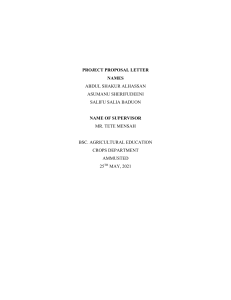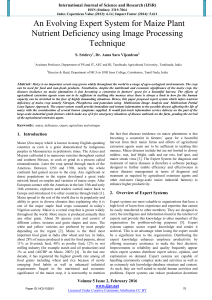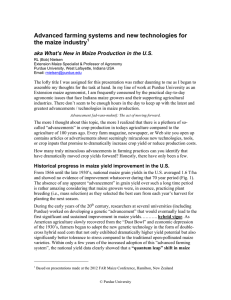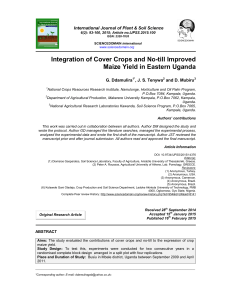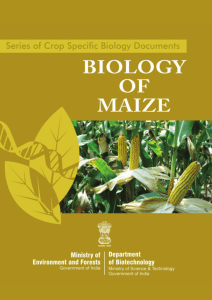General comments The article discusses a topic of interest to BG: do
advertisement
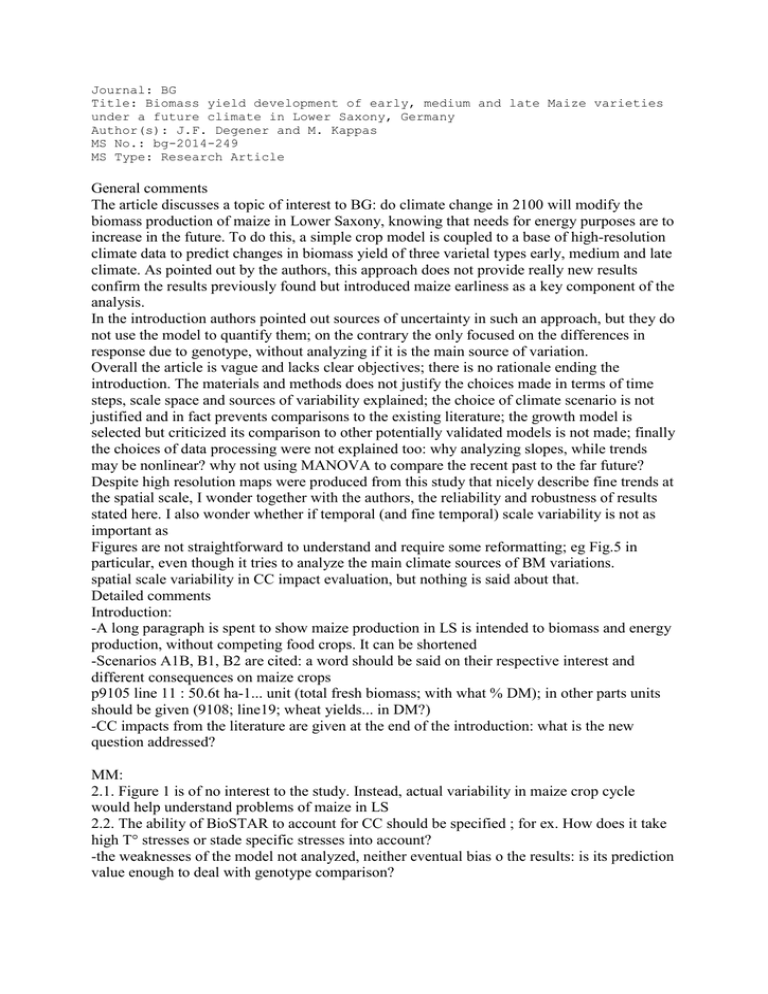
Journal: BG Title: Biomass yield development of early, medium and late Maize varieties under a future climate in Lower Saxony, Germany Author(s): J.F. Degener and M. Kappas MS No.: bg-2014-249 MS Type: Research Article General comments The article discusses a topic of interest to BG: do climate change in 2100 will modify the biomass production of maize in Lower Saxony, knowing that needs for energy purposes are to increase in the future. To do this, a simple crop model is coupled to a base of high-resolution climate data to predict changes in biomass yield of three varietal types early, medium and late climate. As pointed out by the authors, this approach does not provide really new results confirm the results previously found but introduced maize earliness as a key component of the analysis. In the introduction authors pointed out sources of uncertainty in such an approach, but they do not use the model to quantify them; on the contrary the only focused on the differences in response due to genotype, without analyzing if it is the main source of variation. Overall the article is vague and lacks clear objectives; there is no rationale ending the introduction. The materials and methods does not justify the choices made in terms of time steps, scale space and sources of variability explained; the choice of climate scenario is not justified and in fact prevents comparisons to the existing literature; the growth model is selected but criticized its comparison to other potentially validated models is not made; finally the choices of data processing were not explained too: why analyzing slopes, while trends may be nonlinear? why not using MANOVA to compare the recent past to the far future? Despite high resolution maps were produced from this study that nicely describe fine trends at the spatial scale, I wonder together with the authors, the reliability and robustness of results stated here. I also wonder whether if temporal (and fine temporal) scale variability is not as important as Figures are not straightforward to understand and require some reformatting; eg Fig.5 in particular, even though it tries to analyze the main climate sources of BM variations. spatial scale variability in CC impact evaluation, but nothing is said about that. Detailed comments Introduction: -A long paragraph is spent to show maize production in LS is intended to biomass and energy production, without competing food crops. It can be shortened -Scenarios A1B, B1, B2 are cited: a word should be said on their respective interest and different consequences on maize crops p9105 line 11 : 50.6t ha-1... unit (total fresh biomass; with what % DM); in other parts units should be given (9108; line19; wheat yields... in DM?) -CC impacts from the literature are given at the end of the introduction: what is the new question addressed? MM: 2.1. Figure 1 is of no interest to the study. Instead, actual variability in maize crop cycle would help understand problems of maize in LS 2.2. The ability of BioSTAR to account for CC should be specified ; for ex. How does it take high T° stresses or stade specific stresses into account? -the weaknesses of the model not analyzed, neither eventual bias o the results: is its prediction value enough to deal with genotype comparison? (Agricultural and Forest Meteorology 195–196 (2014) may be of some help, and was published later) 2.4. I wonder if a simpler way to address the question would be to select few contrasted climatic zones in LS 2.5. I do not understand the way you selected climatic variables that best explain yield variations? Interactions between variables are included? 3. Fig.2 is difficult to analyze, please reformat grouping seasons instead of periods Results: 4.1. how was the partitioning between periods done? Before and after 2050? What statistics helped to choose the threshold? -are the defined slopes significantly different? Between genotypes? Between periods? -are early, medium or late genotypes better adapted to some sites in LS? Now or in the future? 4.2. If maps are nice to look at, the inter annual variability lacks, even though it is given in the text; perhaps is it the most important thing to a grower. 4.3. Please give the regression you selected rather than Fig 5; in particular, I did not understand at all the right part of the figure. Why not correlate directly a climatic water balance to test your assumption of dry summer importance in future yields? Discussion: as focused on LS production, results are few compared to literature. Some limits of the modeling are underlined and crop practice, as sowing date, is suggested to solve some potential problems of CC in the summer time. Finally, at the end of the paper, we wonder if such a fine spatialized modeling work was necessary to give main trends. I remain skeptical.

